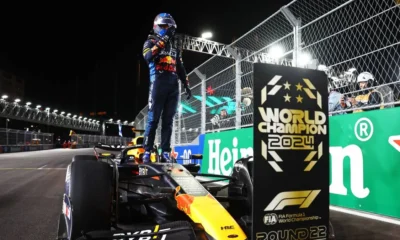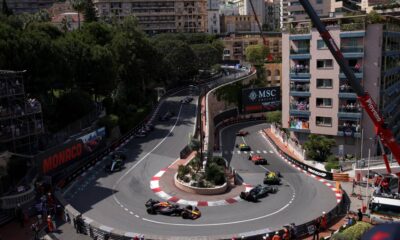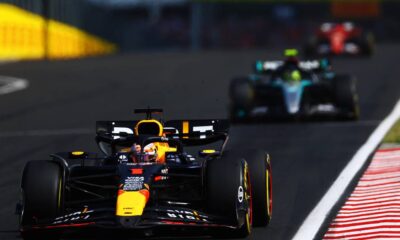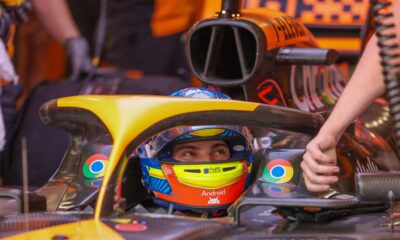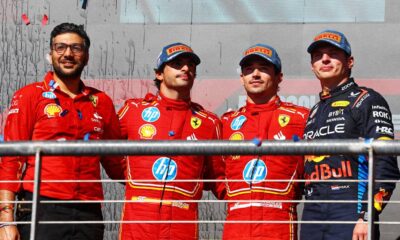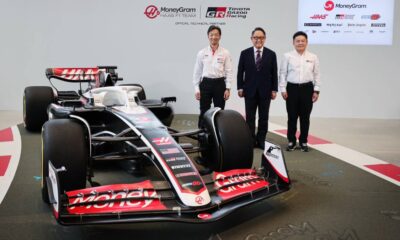Motorsport
Comment: Punishment to you, punishment to you, punishment to all! How to get rid of the track limits problem?
The main topic from the last Formula 1 race is track limits and how drivers’ constant violations of them resulted in perhaps the highest number of post-race penalties ever. Of course, there were instantly all-knowing experts on social media about how they think this problem can be easily solved.

The main topic from the last Formula 1 race is track limits and how drivers’ constant violations of them resulted in perhaps the highest number of post-race penalties ever. Of course, there were instantly all-knowing experts on social media about how they think this problem can be easily solved. In the following lines I will try to explain that the duck does not solve everything and that (surprisingly) it is not as simple as it may seem.
Too bad that Verstappen won again . If someone had beaten him in Austria, it would have been a celebratory moment that would have completely overshadowed all the other action on the Red Bull Ring. Everyone would have been so shocked that everything would have been completely irrelevant. However, it didn’t happen.
Verstappen’s dominance is causing so much depression in many fans that everything in Formula 1 is currently wrong. Budget caps that don’t work, too many city circuits, the “over-regulation” of the sport…
These points of criticism were compounded after the Austrian GP by the asphalt lakes on the exits from the start and the resulting infractions of track limits.
And there were. The race directorate did not stop short of slapping perhaps seven drivers with time penalties during the grand prix and handed out a further twelve penalties after Aston Martin protested.
Poor Esteban Ocon was going off the circuit so often that the stewards interpreted his constant trips as his natural driving style at first. It wasn’t until several hours into the race that a 30-second penalty landed on the Frenchman’s head.
Grass? Impossible
Logically, instead of lauding the McLaren’s improvements, for example, which Lando Norris confirmed with a final fourth place, fans and commentators are racing all sorts of ideas to bid track limits goodbye.
I found the most frequently occurring solution to be the deployment of grass or duckweed on the exit of the incriminating penultimate and final corner. However, perhaps we can discard the grass immediately with a cool head. Firstly, this solution absolutely does not solve the safety problem at this location. In any case, the grass would not sufficiently slow the rider down from hitting the barrier when spinning out.
Secondly, a slight exit onto the grass would hardly slow the rider down, so there would be no significant time loss. Not to mention the wet grass and the potentially much bigger safety gamble. So grass is passé.
Duckweed? Two wheels would be naughty. Or would they?
However, the duckweed is finding consensus with a significant portion of the F1 community. Gravel zones on the face of it solve all the problems outlined for grass above (except perhaps the last one). A glance at a satellite map of the Red Bull Ring, however, reveals that the duckweed lies dominantly between turns four and eight.
This is the solution offered for the final passage of the circuit. The gravel can be found here too, but relatively far behind both corners.
And as Josef Král noted during the commentary for the Grand Prix on Sport TV, if the run-off zones are made entirely of gravel in several other places, why not do so just after turns nine and ten?
The problem, however, is that there are other motorsport series racing at the Red Bull Ring, including motorcycles, which require completely different safety standards. Now who to please, right?
I shouldn’t be able to get away with that argument based on the King’s comments on the live stream. And I’m not trying to get away with it either. Because I see the problem as something else entirely.
It’s not so much that the asphalt paddocks are friendly to days set aside for the public. Nor is it that this solution objectively allows riders to safely avoid potential problems on the track. Or that it allows us to enjoy on-track battles without one of the vehicles ending up in a duck after a light tap.
I see the crux of the problem in the design of the last two corners of the Red Bull Ring itself.
It’s all Rindt’s fault (but mostly Tilke’s)
Fans of race tracks and their history will recall the previous layout of the Red Bull Ring. No, I don’t mean the A1-Ring, it was exactly the same track. I mean the Österreichring, where Formula 1 raced from 1970 to 1987.
Conceptually similar, the track differed from the modern Red Bull Ring in the layout of all the corners found by looking at the modern version of the Austrian circuit. Each of the current ten corners was longer and faster at the then Österreichring.
For safety reasons, this track disappeared (sorry) from the F1 calendar starting in the 1988 season. But let’s focus on the last section of the circuit, Jochen Rindt’s corner. This was a fast, right-hand bend with a relatively constant radius, gradually rolling downhill towards the finish.
A few years after the Österreichring was scrapped, its owners asked the famous architect Hermann Tilke not only to modernize the circuit, but also to redesign the layout. Tilke tinkered with the circuit in such a way that he tightened each corner of the circuit and transformed Rindt into two almost right-angled corners with a short straight between them. Of course, all the changes had one goal, and that was to make the circuit safer and more interesting for the spectators.
But the over-tightened corners with their short radius and relatively fast passage offer only one ideal track. In the case of long stretchers, the rider can stick to the apex of the corner the whole time or over-rotate and try to get a better exit if a long straight follows immediately.
Turns nine and ten at the modern Red Bull Ring allow for no such thing. What’s more, the drivers come into them at high speed and can hardly see where they are going. Carlos Sainz commented, “The speed is so high that you can’t see where the tyres are.” His Ferrari team-mate Charles Leclerc added: ” The higher the speed, the more difficult it is. At Turn 10 the car becomes lighter because there is such a drop on the track and you can’t see it from the cockpit.”
The solution?
All of the points I’ve outlined within this article, after all, play a significant part in why track limits at the Red Bull Ring have become such a hot topic in the first place. And I’m sure there would be many more of these points. But they also play a part in why it’s not easy to just throw a duck to the exit of turns nine and ten, and then pretend like everything is sorted.
On paper, the duck is an easy deterrent for riders to stay on the track at all costs. However, it must be remembered that if it were that simple, both the Automobile and Motorcycle Federations, the owners of the Red Bull Ring and all concerned would certainly be happy to go along with this solution. Conflicts of interest are inevitable and consensus really isn’t often easy.
Whether there are nine and ten ducks, grass, tarmac or a wall at the exit of corners. There will always be ills with a given solution that a vocal minority will start complaining about at the first opportunity.
If I were the unlimited ruler and the chosen one who is always right (which I really don’t intend to be), I would suggest a layout change in the last two turns. It’s not overwhelmingly overtaken here anyway, so why not maybe bring the old Rindt back to life?
Given the nature of the corner, there would be no reason to exceed any track limits. So what if there’s a forest on the outside? So what if the spectator stand was moved or pulled down?
Or maybe we could finally applaud F1 and the FIA for something, for finding a consistent solution to a problem that applies equally to all drivers. Sure, it was annoying. This year it was perhaps over the line and out of bounds.
Well, let’s stick within them next year, shall we, Mr Ocon and co? Many others have made it…
Source: The-Race, F1

